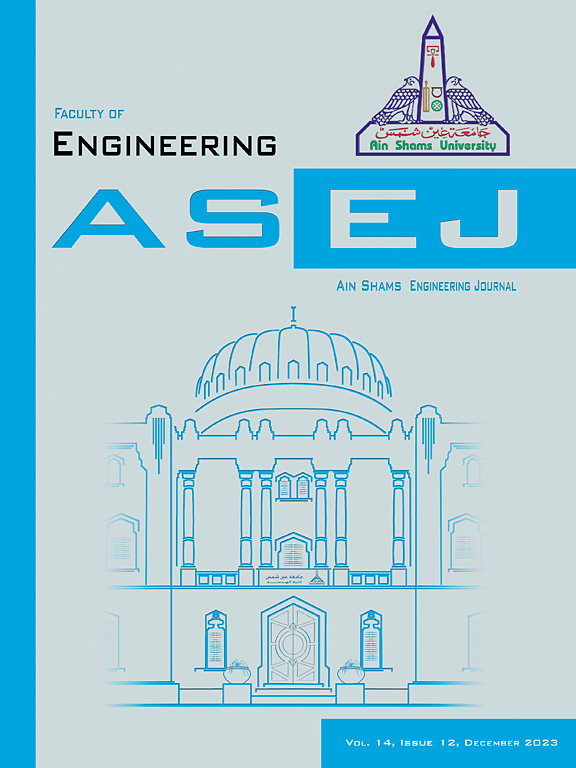提高钢筋混凝土梁抗剪强度、降低施工失败风险的新型可持续技术
IF 6
2区 工程技术
Q1 ENGINEERING, MULTIDISCIPLINARY
引用次数: 0
摘要
本研究旨在评估各种创新和可持续方法在改善钢筋混凝土(RC)梁剪切性能方面的有效性。此类构件的潜在失效风险被认为是一种潜在威胁,因此,本研究通过实验测试和数值分析来解决这一问题,以谨慎地降低失效风险,从而提高建筑物的安全性和可持续性。共有 11 个试样接受了三点测试,其中包括 2 个对照试样和 9 个加固试样。对几种拟议的加固技术进行了研究,每种技术都涉及多个参数。在最初的方法中,使用了嵌入外部纤维增强水泥基砂浆(FRCM)夹层的玻璃纤维增强聚合物(GFRP)纺织品,并对 GFRP 纺织品的层数(1、2 和 3 层)进行了评估。第二种技术将近表面安装 (NSM) 的 GFRP 条与 FRCM 护套结合在一起,GFRP 条的直径(10、12 和 16 毫米)是主要参数。在最后一项技术中,梁表面粘贴了不同厚度(1、1.25 和 1.50 毫米)的外部粘接不锈钢条(SSS)。结果表明,与有缺陷的梁相比,应用 FRCM 护套法产生了积极的效果,裂缝起始荷载平均增加了 30.7%,破坏荷载增加了 17.1%。然而,在 FRCM 护套中观察到了加载点下方的脱粘问题,特别是三层 GFRP 织物,导致混凝土覆盖层分离。此外,将 NSM GFRP 杆件与 FRCM 护套相结合还解决了剪力箍筋缺失的问题。使用 NSM GFRP 杆件和 FRCM 护套的改进最为显著,其次是使用 SSS 和 FRCM 护套。本文章由计算机程序翻译,如有差异,请以英文原文为准。
Novel sustainable techniques for enhancing shear strength of RC beams mitigating construction failure risk
The aim of this study is to evaluate the effectiveness of various innovative and sustainable methods for improving the shear performance of reinforced concrete (RC) beams. The potential risk of failure for such elements is considered a potential threat, therefore, this study addresses it through experimental tests and numerical analyses to be mitigated carefully in order to enhance the safety and sustainability of buildings. A total of eleven specimens, comprising two control specimens and nine strengthened specimens, underwent three-point testing. Several proposed strengthening techniques, each involving multiple parameters, were examined. In the initial approach, glass fiber-reinforced polymer (GFRP) textile embedded in an external fiber-reinforced cementitious mortar (FRCM) jacket was utilized, with an evaluation of the number of the GFRP textile layers (1, 2, and 3 layers). The second technique incorporated near surface mounted (NSM) GFRP bars along with the FRCM jacketing, where the diameter of the GFRP bars (10, 12, and 16 mm) served as the primary parameter. In the final technique, externally bonded stainless-steel strips (SSSs) of varying thicknesses (1, 1.25, 1.50 mm) were affixed to the beams’ surface. The obtained results revealed that the application of the FRCM jacketing method yielded positive results, showing a significant 30.7 % average increase in the crack initiation load and a 17.1 % improvement in the failure load compared to the defected beam. However, issues of debonding beneath the loading point were observed in the FRCM jacket, particularly with three layers of the GFRP textile, leading to the separation of the concrete cover. Moreover, combining the NSM GFRP bars with an FRCM jacket addressed the absence of shear stirrups. The most remarkable improvement was noted utilizing the NSM GFRP bars and an FRCM jacket, followed by employing SSSs with an FRCM jacket.
求助全文
通过发布文献求助,成功后即可免费获取论文全文。
去求助
来源期刊

Ain Shams Engineering Journal
Engineering-General Engineering
CiteScore
10.80
自引率
13.30%
发文量
441
审稿时长
49 weeks
期刊介绍:
in Shams Engineering Journal is an international journal devoted to publication of peer reviewed original high-quality research papers and review papers in both traditional topics and those of emerging science and technology. Areas of both theoretical and fundamental interest as well as those concerning industrial applications, emerging instrumental techniques and those which have some practical application to an aspect of human endeavor, such as the preservation of the environment, health, waste disposal are welcome. The overall focus is on original and rigorous scientific research results which have generic significance.
Ain Shams Engineering Journal focuses upon aspects of mechanical engineering, electrical engineering, civil engineering, chemical engineering, petroleum engineering, environmental engineering, architectural and urban planning engineering. Papers in which knowledge from other disciplines is integrated with engineering are especially welcome like nanotechnology, material sciences, and computational methods as well as applied basic sciences: engineering mathematics, physics and chemistry.
 求助内容:
求助内容: 应助结果提醒方式:
应助结果提醒方式:


